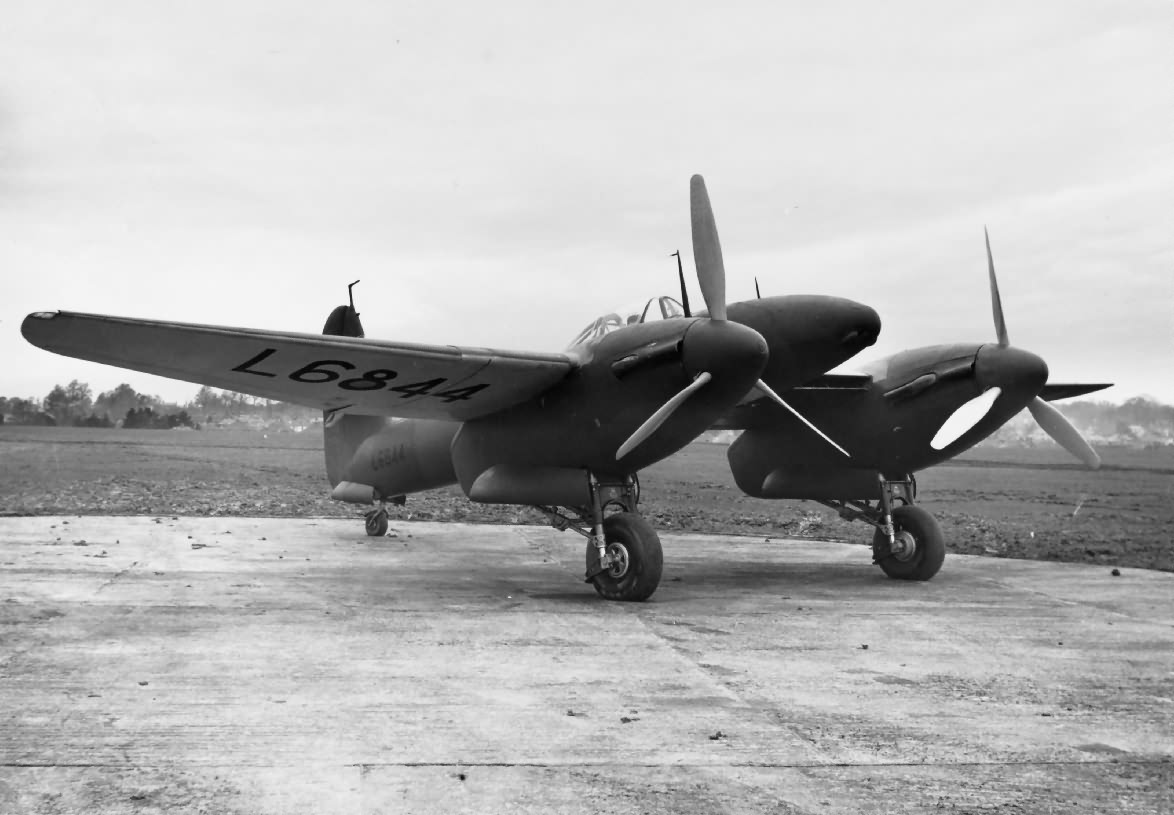Despite delays in the delivery of key components such as the engines and landing gear, the construction of the prototype Whirlwind (L6844) at Yeovil was finished by late September 1938. Harald Penrose initiated ground handling and taxi trials on October 4. These trials revealed issues with engine overheating during prolonged high-power runs, resulting in “steam,” and problems with the Exactor control system, which had replaced the earlier Simmonds-Corse system. After completing these tests, the aircraft had its outer wings and engines removed to be transported by road to RAF Boscombe Down, a larger airfield home to No. 88 and 218 Squadrons, which flew Fairey Battles.
Once reassembled at Boscombe Down, additional taxi and high-speed trials were conducted on October 11 to allow Penrose to familiarize himself with the controls. However, the overheating issues persisted. During a fast run, Penrose was forced to take off unexpectedly when he realized the aircraft would run out of runway, managing to get airborne with only a few yards to spare.
Following this, L6844 returned to Yeovil for contractor trials starting on November 10. Numerous technical challenges arose during these trials, as the aircraft featured many advanced engineering concepts in combination with the untested Peregrine engines. The two engines used were the fourth and seventh produced, and although their performance was generally satisfactory, they continued to overheat, leading to the seizure and removal of the starboard engine. There were also directional control issues, which were partially addressed by increasing the rudder’s area above the tailplane. The rudder, divided into upper and lower sections with offset hinges due to control geometry, was initially ineffective at small angles and too heavy at larger deflections. Various solutions were tried, eventually resulting in the rudder receiving concave surfaces on the lower section and the starboard side of the upper section.
Additional issues included tail buffeting during stalls and tight turns, pronounced nose-down pitching at higher speeds, overly heavy ailerons, and outer slats that tended to slam open. In later service, the slats were typically locked shut. By the end of the year, many problems had been encountered, and while some were resolved, others persisted when L6844 was sent to the Royal Aircraft Establishment (RAE) at Farnborough on December 31, 1938, for brief handling trials. Westland was informed that the results of these trials would determine a potential production order for 200 Whirlwinds.
After only two-and-a-half hours of flight testing at the RAE, which confirmed Penrose’s earlier findings, L6844 returned to Yeovil to continue its testing program. By April, it had logged only 25 hours of flight time, during which approximately 250 modifications were made. These included changes to the slats, aileron leading-edge, servo tab gear ratio, and cockpit layout. Major adjustments included adding a fin-shielded horn balance to the upper rudder section and a small wooden fairing between the fin and tailplane to reduce buffeting during tight turns.
Meanwhile, construction of the second prototype, L6845, progressed steadily but was delayed to incorporate necessary modifications. The second aircraft also awaited its engines—the 11th and 12th Peregrine units to be built – and finally took to the air on March 29, 1939.
